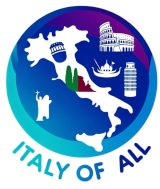The province of Massa-Carrara, located in the northern part of Tuscany, Italy, is renowned for its rich historical heritage, unique geological resources, and picturesque landscapes. This province is especially famous for its marble quarries in the Apuan Alps, which have been exploited since the Roman times and continue to be a significant cultural and economic asset.
Geographically, Massa-Carrara is characterized by its dramatic mountainous regions, notably the Apuan Alps, known for their distinctive white peaks that result from marble quarrying. The landscape transitions from rugged mountains to the coastal areas along the Ligurian Sea, offering a mix of beaches and cliffs. The contrast between the Alpine-like mountains and the coastal environment provides a unique backdrop to the region.
Historically, the area has a rich past, with Massa and Carrara each having their own distinct histories. Massa has been historically governed by various powers, including the Malaspina family, and later became part of the Duchy of Massa and Carrara under the Cybo-Malaspina dynasty. Carrara is known globally for its marble, which has been used in some of the world’s most admired sculptures and buildings, including Rome’s Pantheon and Michelangelo’s David.
Culturally, Massa-Carrara maintains a robust connection to its artisanal and industrial heritage, particularly through its marble industry. The province is also rich in traditional events and festivals, such as the San Peiro festival in Carrara and the carnival in Massa, which highlight local customs, music, and cuisine. The region’s theaters and galleries, such as the Civic Marble Museum in Carrara, showcase its geological and artistic significance.
Cuisine in Massa-Carrara reflects its position between the mountains and the sea, offering a variety of dishes that incorporate seafood, local meats, and mountain herbs. Specialties include “sgabei,” small pieces of fried bread dough served with cold cuts or cheese, and “torta d’erbi,” a savory pie filled with wild herbs. The province is also known for its “lardo di Colonnata,” a delicacy of cured pork fat seasoned in marble vats, highlighting the unique use of local marble in culinary traditions.
Economically, Massa-Carrara’s economy has historically been dominated by the marble industry, which continues to be a major employer and a symbol of the region. However, the area also relies on other sectors such as manufacturing, agriculture, and tourism. The beautiful landscapes, historical sites, and unique cultural heritage attract visitors, contributing to the local economy.
Despite challenges such as environmental concerns related to marble quarrying and the need for economic diversification, Massa-Carrara is actively engaged in promoting sustainable practices within its industries and enhancing its tourism appeal. Efforts to protect the natural environment of the Apuan Alps while maintaining its industrial heritage are key to the province’s future development.
Overall, the province of Massa-Carrara offers a distinctive blend of natural beauty, historical depth, and industrial heritage. Its commitment to preserving its cultural identity while fostering sustainable development ensures its continued significance as an intriguing and valuable region in Tuscany.
Comuni in Massa-Carrara Province:
